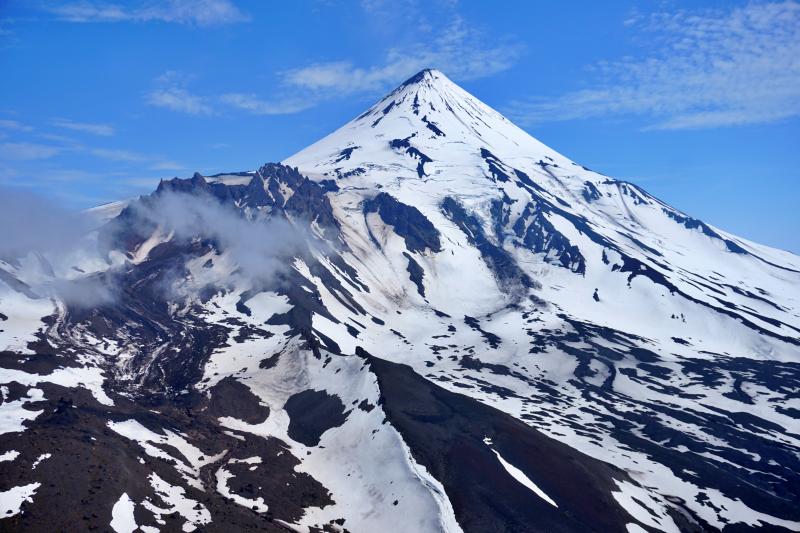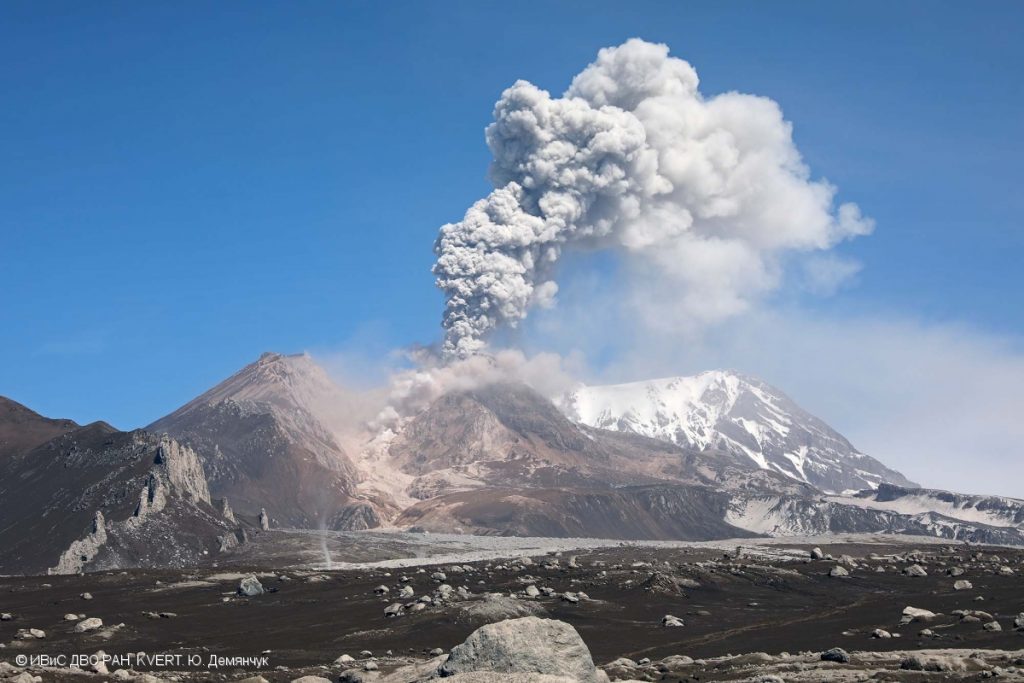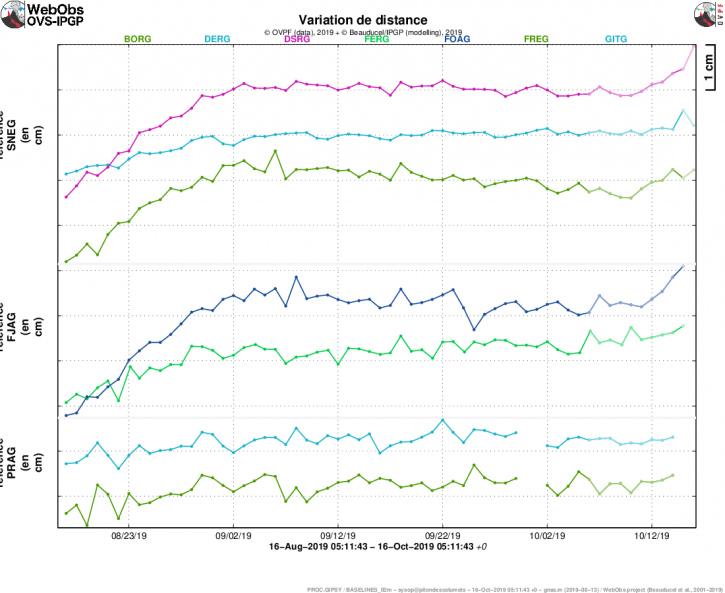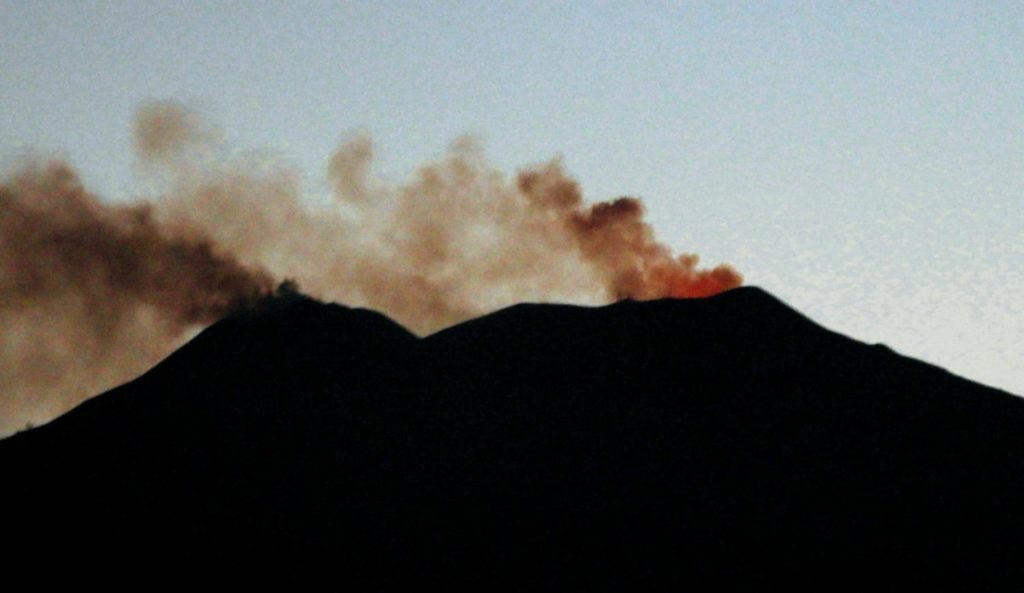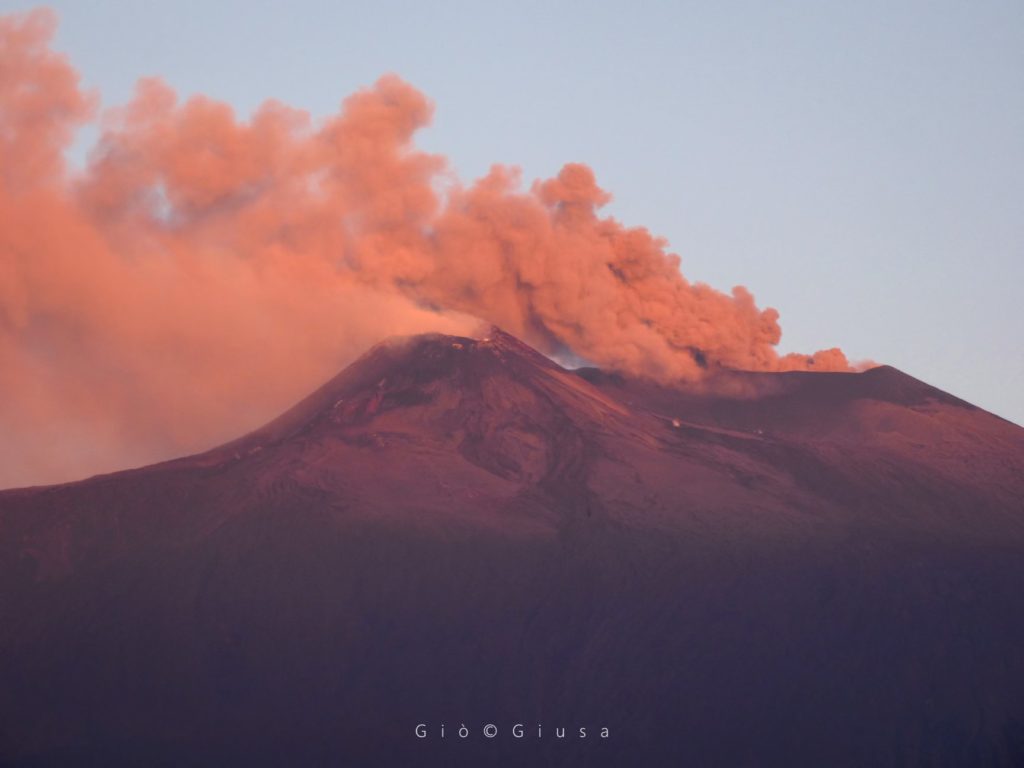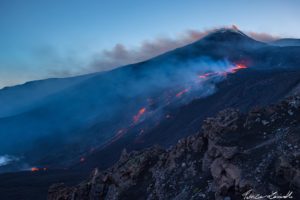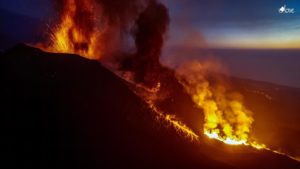October 19 , 2019.
Alaska , Shishaldin :
AVO/USGS Volcanic Activity Notice
Current Volcano Alert Level: WATCH
Previous Volcano Alert Level: ADVISORY
Current Aviation Color Code: ORANGE
Previous Aviation Color Code: YELLOW
Issued: Thursday, October 17, 2019, 11:06 AM AKDT
Source: Alaska Volcano Observatory
Location: N 54 deg 45 min W 163 deg 58 min
Elevation: 9373 ft (2857 m)
Area: Aleutians
Volcanic Activity Summary:
Observations from today show that a new lava effusion event began at Shishaldin on 13 October. Elevated surface temperatures have been observed at the summit of Shishaldin and low-level seismicity continues on the local network indicating that eruptive activity is likely continuing. The eruption is confined to the summit area and no ash clouds have been observed. The Alaska Volcano Observatory is raising the Aviation Color Code for Shishaldin Volcano to ORANGE and the Alert Level to WATCH.
Shishaldin is monitored by local seismic and infrasound sensors, satellite data, a web camera, a telemetered geodetic network, and distant infrasound and lightning networks.
Recent Observations:
[Volcanic cloud height] None
[Other volcanic cloud information] N/A
Remarks:
Shishaldin volcano, located near the center of Unimak Island in the eastern Aleutian Islands, is a spectacular symmetric cone with a base diameter of approximately 16 km (10 mi). A 200-m-wide (660 ft) funnel-shaped summit crater typically emits a steam plume and occasional small amounts of ash. Shishaldin is one of the most active volcanoes in the Aleutian volcanic arc, with at least 54 episodes of unrest including over 24 confirmed eruptions since 1775. Most eruptions are relatively small, although the April-May 1999 event generated an ash column that reached 45,000 ft above sea level.
Source : AVO.
Photo : Fee, David , Juillet 2019.
Kamchatka , Sheveluch :
VOLCANO OBSERVATORY NOTICE FOR AVIATION (VONA).
Issued: October 17 , 2019.
Volcano: Sheveluch (CAVW #300270)
Current aviation colour code: ORANGE
Previous aviation colour code: orange
Source: KVERT
Notice Number: 2019-156
Volcano Location: N 56 deg 38 min E 161 deg 18 min
Area: Kamchatka, Russia
Summit Elevation: 10768.24 ft (3283 m), the dome elevation ~8200 ft (2500 m)
Volcanic Activity Summary:
A growth of the lava dome continues, a strong fumarolic activity sometimes with some amount of ash, and an incandescence of the dome blocks and hot avalanches accompanies this process. Satellite data by KVERT showed a resuspended ash plume continues to move to the east-southeast of the volcano.
Explosive-extrusive eruption of the volcano continues. Ash explosions up to 32,800-49,200 ft (10-15 km) a.s.l. could occur at any time. Ongoing activity could affect international and low-flying aircraft.
Volcanic cloud height:
9840-11480 ft (3000-3500 m) AMSL Time and method of ash plume/cloud height determination: 20191017/0020Z – Himawari-8
Other volcanic cloud information:
Distance of ash plume/cloud of the volcano: 75 mi (120 km)
Direction of drift of ash plume/cloud of the volcano: ESE / azimuth 111 deg
Time and method of ash plume/cloud determination: 20191017/0020Z – Himawari-8.
Source : Kvert.
Photo : 14/5/2017 . Yu. Demyanchuk, IVS FEB RAS, KVERT
La Réunion , Piton de la Fournaise :
Activity bulletin of 16 October 2019 at 10:00 (local time).
Since October 11, a recovery of seismicity is observed under the Piton de la Fournaise. Thus 36 superficial volcano-tectonic earthquakes (<2 km below the summit) were recorded under the summit zone between 11 and 15 October (Figure 1). More profound earthquakes are also recorded (under the summit and under the eastern flank).
Figure 1: Histogram representing the number of superficial volcano-tectonic earthquakes recorded between October 1 and October 15, 2019 (© OVPF-IPGP).
This seismicity is accompanied by a resumption of inflation (swelling) of the base and the top of the Piton de la Fournaise building (Figure 2). This inflation of the building is synonymous with a pressurization of the superficial magma reservoir located about 2-2.5 km below the summit.
In parallel, CO2 concentrations in the soil are still decreasing in the far field (Plaine des Cafres and Plaine des Palmistes sectors) and in slight increase in the proximal zone (Gite du Volcan). These evolutions of CO2 concentrations are in agreement with a deep rise of magma from the deep zones (decrease of the concentrations in distal zone) towards the superficial reservoir (increase of the concentrations in proximal zone).
Note that this process of recharging the superficial reservoir can take several days to several weeks before the roof of the tank becomes brittle and breaks, giving rise to an injection of magma towards the surface and an eruption, but can also stop without giving rise to an eruption in the short term.
Figure 2: Illustration of the deformation over the last two months. Bases are shown here (variation of distance between two GPS receivers) crossing the Piton de la Fournaise building, at the top (at the top), at the base of the terminal cone (in the middle) and in the far field (at the bottom ). A rise is synonymous with elongation and therefore swelling of the volcano; conversely, a decrease is synonymous with contraction and therefore deflation of the volcano. (© OVPF-IPGP).
Source et photo : OVPF.
Read the full article : http://www.ipgp.fr/fr/ovpf/bulletin-dactivite-16-octobre-2019-a-10h00-heure-locale
Italy / Sicily , Etna :
COMMUNICATION on the volcanic activity of October 17, 2019 at 06:52:20 (UTC) – ETNA.
The National Institute of Geophysics and Volcanology, Osservatorio Etneo, announces that from about 5:30 UTC, CCTV cameras show ash emissions from the craters of the summit, especially the crater of Voragine and Northeast. The fine material is dispersed by the winds towards the East.
The average amplitude of volcanic tremor has remained at average values, without showing any significant changes.
Eruptive activity of the crater North-East of Etna, the evening of October 18, 2019, seen from Taormina. In the photo, you can see a strong glow in the Northeast Crater and a thick plume of gas from the Southeast Crater (left).
Weekly bulletin 07/10/2019 – 10/13/2019 (date of issue on 15/10/2019)
SUMMARY:
In light of the surveillance data, we highlight:
1) VOLCANOLOGICAL OBSERVATIONS: Strombolian intra-crateric activity of the crater of Voragine and Crater of Bocca Nuova. Emissions of ash from the Northeast crater, with formation of ash clouds. Ordinary degassing activity of the New Southeast Crater.
2) SISMOLOGY: Modest seismic activity due to fracturing; stationary parameters of volcanic tremor.
3) INFRASONS: High infrasonic activity in the second half of the week in question.
4) DEFORMATIONS: The inclination and GPS networks did not show any significant changes in the trends previously reported.
5) GEOCHEMISTRY: SO2 fluxes are at a medium-low level. Terrestrial CO2 fluxes show a slightly upward trend, reaching medium-low values. The partial pressure of CO2 in the soil does not show any significant changes. Helium isotopic ratio values show a new increase, stabilizing at medium-high values (latest data available on September 25).
VOLCANOLOGICAL OBSERVATIONS:
The monitoring of volcanic crater activity at the summit of Mount Etna during the week was carried out by analyzing the images of the surveillance camera network of the INGV section – Catania, Osservatorio Etneo (INGV-OE). During the period, Etna’s activity showed some changes compared to what had been reported the previous week (see Report No. 41/2019). In fact, ash emissions from the Northeast Crater (NEC) have shifted from occasional to more frequent and intense. As already reported the previous week, strombolian intra-crateric explosive activity continued in the Voragine crater (VOR) and in the Bocca Nuova crater (BN). The New Southeast Crater (NCSE) was affected by an ordinary degassing activity.
In particular, the Northeast Crater produced ash throughout the week. The phases alternated during which the ashes, very dilute, quickly dispersed in the zone of the summit, phases during which an abundant fine matter was emitted continuously during several hours. This happened on October 10th, from about 8:00 UTC, on October 11th from 4:30 UTC, on October 12th from 06:30 UTC. approximately, and October 13 from 6:40 UTC approximately. During these phases, light gray ash clouds formed that the wind dispersed mainly to the southern quadrants of the volcano. Fine material spills have been reported in Pedara, Mascalucia, Nicolosi, San Giovanni La Punta and Catania.
Etna and the remarkable ash emissions from the Northeast Crater at the first light of dawn. Santa Venerina (CT) October 11, 2019
At the Voragine crater, Strombolian activity continued from the slag cone formed inside the crater. The explosions produced both coarse pyroclastic materials that fell back into the crater area and frequent ash emissions that quickly dispersed into the atmosphere. In the Crater of Bocca Nuova, a Strombolian intra-crateric explosive activity produced by multiple vents has been observed, accompanied by the launching of coarse materials at heights sometimes exceeding the edge of the crater. Finally, the New Southeast Crater showed intense degassing of the summit mouth and fumaroles on the edges and walls of the cone.
Source : INGV.
Read the full article : file:///C:/Users/Utilisateur/AppData/Local/Packages/Microsoft.MicrosoftEdge_8wekyb3d8bbwe/TempState/Downloads/Bollettinoetna20191015%20(1).pdf
Photos : Boris Behncke , Gio Giusa.

